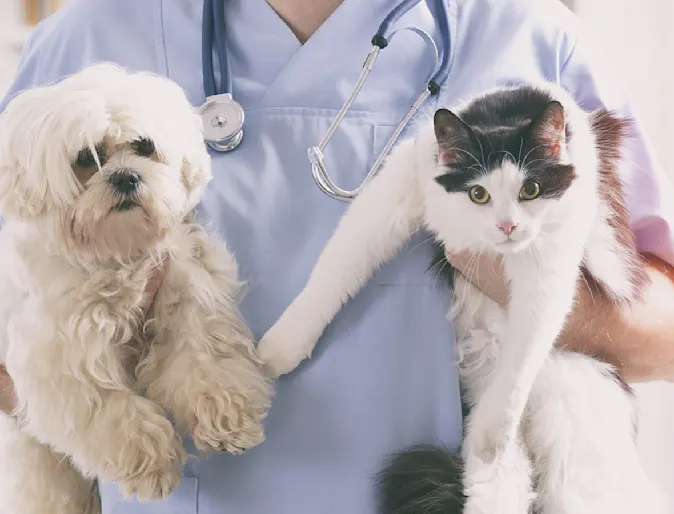Guide to Handling Accidents Quickly With Help From an emergency vet near me
Guide to Handling Accidents Quickly With Help From an emergency vet near me
Blog Article
Why Animal Rehab Is Important: the Benefits of Veterinarian Solutions for Your Pet's Recuperation
Pet rehabilitation is a crucial element of recovery for family pets facing injuries or impairments. Veterinary solutions provide vital support through customized rehab strategies that attend to private demands. These plans frequently consist of pain monitoring, physical therapy, and dietary guidance. Understanding the numerous aspects of pet rehab can brighten its value in improving recovery outcomes. What particular advantages do these services use, and exactly how can they transform a pet dog's healing journey?
Understanding Animal Recovery
Animal rehab includes a range of therapeutic methods aimed at recovering the health and capability of damaged or handicapped pets. This area incorporates various techniques, consisting of physical therapy, hydrotherapy, and work-related treatment, tailored to meet the specific requirements of each pet. Rehabilitation professionals evaluate a pet's problem, establishing personalized treatment plans that might entail exercises to reinforce muscle mass, improve movement, and boost general wellness. The procedure not just focuses on physical recovery however additionally addresses psychological and behavioral aspects. Pets typically experience stress and anxiousness following an injury, making psychological health and wellness factors to consider crucial in recovery. By developing a supportive atmosphere, therapists can assist pets reclaim their confidence and adapt to their brand-new circumstances. Through routine sessions, pets can experience substantial enhancements, ultimately bring about a far better lifestyle. On the whole, recognizing animal recovery highlights its value in promoting recuperation and improving the bond in between pets and their proprietors.
The Duty of Discomfort Management in Recovery
How important is effective discomfort management in the healing of damaged animals? It plays a vital role in assisting in recovery and boosting the total well-being of pet dogs. Proper discomfort management not just relieves discomfort however likewise promotes wheelchair, making it possible for animals to join rehab activities necessary for recovery. When discomfort is effectively taken care of, pets often tend to respond favorably to therapy, bring about quicker rehab outcomes.Veterinarians use various techniques to evaluate and address pain, including medicines, acupuncture, and alternate treatments. By customizing pain administration strategies to the private demands of each animal, vets can ensure that family pets remain calm and participating throughout their healing trip. Lessening discomfort helps lower tension, which can prevent healing and lengthen healing times. To summarize, efficient pain administration is vital for boosting the recovery procedure and boosting the quality of life for injured animals.
Physical Treatment Techniques for Pet Dogs
Numerous physical therapy strategies are available to help in the recovery of family pets recuperating from injuries or surgical procedures (canine tplo surgery). These strategies can improve movement, alleviate pain, and promote healing. Therapeutic exercises, as an example, help enhance muscular tissues and enhance joint function, enabling pets to reclaim their physical abilities gradually. Hands-on treatment, which consists of massage and mobilization, can reduce tension and enhance circulation, contributing to a much faster recovery.Other strategies such as easy series of activity exercises urge joint adaptability and decrease rigidity. Furthermore, electric stimulation treatment may be used to promote nerves and muscles, promoting recovery and pain relief.Veterinary specialists often customize these strategies per pet's specific needs, ensuring an extensive rehab plan. By implementing these physical treatment approaches, pets can experience improved lifestyle and an extra effective recovery from their disorders. The combination of these practices right into recovery programs is vital for optimal recuperation outcomes
Benefits of Hydrotherapy for Rehab
Hydrotherapy uses considerable advantages in pet rehabilitation, specifically in improving wheelchair. This water-based therapy advertises discomfort alleviation while offering convenience to wounded or recuperating pets. In addition, it facilitates strength-building exercises that add to overall physical recovery.
Improved Mobility Enhancement
As animals recuperate from injuries or surgeries, improved mobility often comes to be a key goal of their rehabilitation. Hydrotherapy acts as a beneficial tool in attaining this objective. Via water-based exercises, pets can take part in low-impact activities that facilitate joint mobility and strengthen muscle mass without the tension of weight-bearing tasks. The buoyancy of water supports their bodies, permitting increased variety of movement and flexibility renovation. Furthermore, hydrotherapy encourages better equilibrium and control, which are essential for recovering typical movement patterns. Regular sessions can result in considerable progress in an animal's physical capacities, eventually enhancing their lifestyle. This approach not just aids in recuperation but also advertises a much more active and fulfilling way of living post-rehabilitation.
Discomfort Relief and Comfort

Relief from pain is an essential element of pet rehabilitation, and hydrotherapy greatly adds to this process. By making use of water's buoyancy, hydrotherapy reduces joint stress and relieves pain during movement. This restorative strategy gives a calming environment where family pets can involve in mild workouts without the complete weight of their bodies impacting their recovery. The cozy water boosts blood circulation, promoting healing while likewise encouraging leisure. Furthermore, hydrotherapy sessions can be customized to meet the certain needs of the animal, ensuring excellent convenience. As pet dogs experience lowered pain and raised convenience levels, their total determination to get involved in rehabilitation tasks commonly enhances, leading to a much more efficient recuperation journey. Hydrotherapy offers as a vital tool in improving discomfort relief and comfort during rehabilitation.
Toughness Building Workouts
Strength-building exercises play an important duty in the recovery process, with hydrotherapy offering distinct advantages. This kind of therapy uses water resistance to boost muscle mass stamina without placing extreme pressure on the joints. The buoyancy of water sustains the pet dog's weight, permitting for safer motion and increased range of motion. Furthermore, hydrotherapy can enhance cardiovascular health and advertise total health and fitness, assisting in faster recuperation from injuries or surgical procedures. The regulated setting also minimizes the threat of reinjury, making it an excellent option for pet dogs requiring rehabilitation. Normal hydrotherapy sessions can lead to obvious renovations in flexibility, strength, and endurance, inevitably enhancing the family pet's top quality of life and capacity to go back to normal tasks.
Significance of Custom-made Rehabilitation Plans
Customized rehab plans are important for resolving the one-of-a-kind requirements of each pet, making sure customized therapy approaches. These plans allow for effective progression tracking and required modifications, promoting suitable recuperation results. Additionally, an all natural approach can boost the overall wellness of the animal, advertising an extra complete recovery experience.
Individualized Treatment Approaches
While numerous recovery programs adopt a one-size-fits-all strategy, the distinct demands of each animal require customized treatment prepare for optimal recuperation. Customized rehabilitation strategies consider different variables, consisting of the pet's varieties, age, medical history, and specific injuries or conditions. By tailoring interventions, veterinarians can resolve each family pet's unique challenges, taking full advantage of the performance of the rehab procedure. Embellished plans may integrate different modalities such as physical treatment, hydrotherapy, and therapeutic click here exercises, making certain that the therapy lines up with the pet's capabilities and progression. Furthermore, customized strategies cultivate a stronger bond in between the animal and the caretaker, promoting a much more appealing and encouraging healing setting. Eventually, personalized therapy is important for achieving finest feasible outcomes in pet rehabilitation.
Progress Tracking and Adjustments

Holistic Recovery Strategies
Holistic recuperation strategies are essential for reliable pet rehab, as they stress the importance of individualized treatment plans tailored per animal's particular requirements. This method considers the physical, emotional, and ecological factors impacting recuperation. Customized rehab strategies may consist of a mix of physical treatment, nutritional counseling, and behavior alterations. By resolving these diverse elements, vets can improve the general wellness of the pet and promote a much faster healing. Furthermore, such customized strategies promote a much deeper understanding of the pet's distinct obstacles, leading to a lot more efficient interventions. Eventually, holistic recuperation techniques not only enhance physical wellness but likewise add to the pet's psychological and emotional stability, making certain a detailed rehab experience.
The Impact of Nourishment on Recuperation
Nourishment plays a necessary duty in the recuperation procedure for rehabilitating animals, typically figuring out the speed and efficiency of healing. A well-balanced diet plan gives the necessary nutrients that sustain cells repair, increase the immune system, and boost general vigor. Protein is specifically important, as it helps in muscle rebuilding and recuperation from injuries. Essential fats, vitamins, and minerals likewise contribute to decreasing swelling and promoting optimal mobile function.Veterinarians often highlight the significance of customized nutrition plans, thinking about each animal's particular requirements, age, and health condition. Proper hydration is just as crucial, as fluids assist in vitamins and mineral absorption and assistance in cleansing. By making sure that animals get appropriate nourishment, caregivers can substantially enhance their opportunities of an effective healing, causing far better lasting health and wellness results. Inevitably, nourishment works as a foundational aspect in the rehab journey, sustaining pets in restoring toughness and durability post-injury or illness.
Success Stories: Animals That Flourished After Rehab
Successful rehab tales abound, showcasing the resilience of pets who have gotten over significant difficulties. Take, for example, Bella, a golden retriever who experienced severe injuries from a car accident. With devoted vet care and a thorough recovery program, she restored her movement and returned to her lively self, much to her owner's joy. Similarly, Max, an elderly feline detected with arthritis, experienced amazing improvement with a combination of physical therapy and discomfort monitoring. His newly found agility enabled him to enjoy his favored sunbathing spots again. An additional inspiring instance is that of Coco, a saved greyhound that got rid of stress and anxiety through therapy and socializing methods, enabling her to grow in her new home. These success tales exemplify the transformative power of animal recovery, stressing that with the appropriate support, pets can not just recoup however lead satisfying lives, improving the bonds they show to their households.
Often Asked Concerns
How Long Does the Rehabilitation Process Usually Consider Family Pets?
The rehab procedure for family pets commonly differs based upon the injury or problem, varying from a couple of weeks to numerous months. Individual progress, therapy type, and commitment to exercises greatly influence the overall duration of recovery.
Exist Any Type Of Dangers Connected With Pet Rehabilitation?
Pet rehab may bring risks such as worsening of injuries, improper methods resulting in pain, or not enough surveillance throughout recovery. These elements can hinder development and affect the overall efficiency of the rehabilitation process.

Can All Pets Advantage From Recovery Solutions?
Not all pet dogs might require recovery, yet numerous can profit substantially. Recovery services can improve flexibility, ease pain, and improve general well-being, specifically for those recovering from injuries, surgical procedures, or chronic problems.
How Can I Prepare My Pet for Recovery Sessions?

What Indications Show My Family Pet Demands Rehab?
Indications suggesting an animal may need rehab include trouble strolling, hopping, reduced task degrees, unwillingness to jump, or indications of pain. Observing these habits can prompt owners to seek expert evaluation and therapy for their family pets.
Report this page